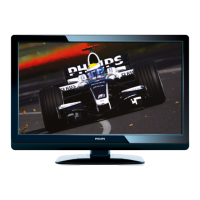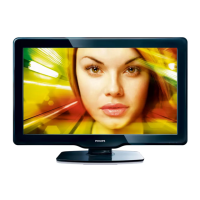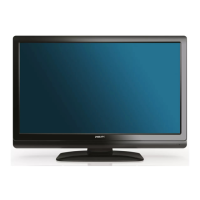Do you have a question about the Philips 42PFL3606H and is the answer not in the manual?
Controls located directly on the TV for operation.
Identification and functions of remote control buttons.
Steps to power on the television.
How to change between TV channels.
Adjusting display and audio preferences.
Keeping the TV's firmware up-to-date for optimal performance.
Automatically searching and storing channels.
Manually searching and storing analogue channels.
How to connect a computer to the TV.
Utilizing HDMI-CEC features for device control.
Solutions for common TV operational problems.
Troubleshooting for channel reception and list problems.
Solutions for problems related to the TV picture display.
Solutions for problems related to TV audio output.
Troubleshooting for issues with HDMI device connections.
Solutions for problems connecting a computer to the TV.
| Teletext function | Yes |
|---|---|
| Teletext standards | Smart-text |
| Audio formats supported | MP3 |
| Image formats supported | JPG |
| Video formats supported | H.264, MPEG1, MPEG2, MPEG4 |
| Package depth | 160 mm |
| Package width | 1026 mm |
| Package height | 610 mm |
| Package weight | 17300 g |
| Display diagonal | 42 \ |
| Display brightness | 400 cd/m² |
| Display technology | LCD |
| Native aspect ratio | 16:9 |
| Supported video modes | 1080p |
| Contrast ratio (dynamic) | 100000:1 |
| Display diagonal (metric) | 107 cm |
| Screen format adjustments | 4:3, 14:9, 16:9, Auto, Zoom |
| Supported graphics resolutions | 1920 x 1080 (HD 1080) |
| RS-232 ports | 0 |
| USB 2.0 ports quantity | USB 2.0 ports have a data transmission speed of 480 Mbps, and are backwards compatible with USB 1.1 ports. You can connect all kinds of peripheral devices to them. |
| Digital audio coaxial out | 1 |
| Consumer Electronics Control (CEC) | EasyLink |
| Panel mounting interface | 200 x 200 mm |
| Number of products included | 1 pc(s) |
| Sound enhancement technology | ClearSound, IncredibleSurround |
| RMS rated power | 20 W |
| AC input voltage | 220 - 240 V |
| AC input frequency | 50 Hz |
| Power consumption (standby) | 0.3 W |
| Power consumption (typical) | 170 W |
| Analog signal format system | NTSC, SECAM |
| Digital signal format system | DVB-C, DVB-T |
| Depth (with stand) | 236.4 mm |
|---|---|
| Width (with stand) | 1018 mm |
| Height (with stand) | 683 mm |
| Weight (with stand) | 14200 g |
| Depth (without stand) | 83 mm |
| Height (without stand) | 635.8 mm |
| Weight (without stand) | 11700 g |











